
Some bird families are represented by just a single living species, evolutionary outliers that stand alone on their branches of avian taxonomy. Our expertly guided tours give you rare chances to encounter these remarkable monotypic families in their stunning habitats.
Below are some of our upcoming departures with spaces remaining that target these sought after families.

The Egyptian Plover stands alone in the family Pluvianidae. Despite its name, it is neither a true plover nor commonly found in Egypt today. Instead, it inhabits wide sandy riverbanks across central Africa, where it feeds by deftly picking insects and small invertebrates from the ground. Famous legends once claimed it cleaned crocodiles’ teeth, but no evidence supports this behavior. Its nesting strategy is among the most remarkable in the bird world, it digs a deep scrape in sun-baked sandbars, partially burying the eggs to shield them from the tropical heat. Adults regulate the temperature by wetting their belly feathers and transferring water to the sand, sometimes even cooling their chicks this way. The young are precocial, leaving the nest the day they hatch yet remaining dependent on the parents for shade and hydration. Few species better illustrate adaptation to extreme riverine environments. Its appearance and behavior are unlike any other bird family, and Ghana is one of the best places in the world to see it.
Ghana is West Africa’s most accessible and welcoming birding destination. It is politically stable, English-speaking, and offers access to the Upper Guinea forest block, one of Africa’s richest Endemic Bird Areas.
Habitats range from Guinea savanna to lush rainforest, with canopy walkways and wide forest trails ideal for birding. Typical African families such as turacos, sunbirds, hornbills, and greenbuls are abundant, and the region teems with forest specials.
Ghana is also one of the best countries to connect with several other key bird families like Rockfowl, Hylias, and Hyliotas.
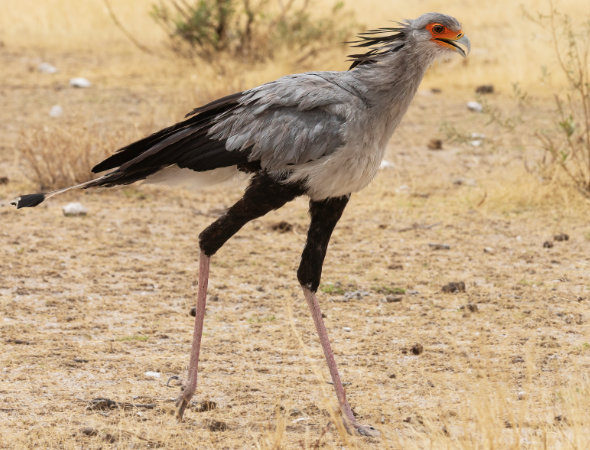
The Secretarybird is one of the worlds most unmistakable and charismatic birds, standing alone in its own family, Sagittariidae. Tall and long-legged, with an eagle-like body and quill-like head plumes, it combines the grace of a crane with the predatory power of a raptor. Secretarybirds stride across the African savanna with measured steps, searching for prey that ranges from large insects and rodents to hares and snakes. When hunting, they deliver rapid, forceful kicks to stun or kill, sometimes tossing reptiles into the air or dropping them from height to finish the job. Their nests are large stick platforms built on top of bushy trees, from which they launch clumsily into flight over the grasslands.
Eastern South Africa offers some of the continent’s finest birding and game viewing. The provinces of KwaZulu-Natal and Mpumalanga boast over 750 bird species across a stunning range of habitats. From the endless savannas and big game of Kruger National Park to the rich wetlands and woodlands of Zululand, the endemic-laden mist-belt forests of the Natal Midlands, and the sweeping peaks of the Drakensberg, the variety is extraordinary. Birders can expect a thrilling mix of raptors, barbets, sunbirds, turacos, and endemic specials, all amid classic African scenery while other key bird families like Rockjumpers and Sugarbirds will be additional highlights. Modern infrastructure, comfortable lodges, and a diversity of ecosystems make this one of the most rewarding and well-balanced birding adventures on the African continent.
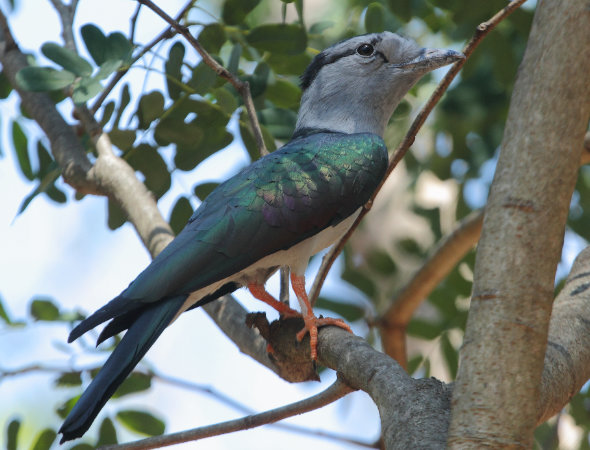
The Cuckoo-roller is one of Madagascar’s most unusual birds, which is a tall order for this most weird and wonderful destination. It is the only member of the family Leptosomidae. Despite its long tail and large head recalling both cuckoos and rollers, it is not closely related to either. Instead, it represents an ancient and isolated lineage found only in Madagascar and nearby Comoros. The sexes differ greatly in appearance, males are pale gray and black with a green sheen on the wings, while females are light brown with dark barring and spots. The loud whistled screams can be heard from afar, and this species is not infrequently seen throughout much of their range. Much about its nesting behavior remains unknown, leaving the Cuckoo-roller one of the island’s most intriguing species.
Madagascar, often called the “Eighth Continent,” is a vast island of exceptional biological diversity. Its long isolation has produced plants and animals found nowhere else on earth. Our comprehensive tour explores the island’s wide range of habitats, from humid eastern rainforests to spiny deserts and highland plateaus. The island is home to no less than five endemic bird families: the ground rollers, Cuckoo-roller, mesites, Malagasy warblers, and asities. Beyond birds, Madagascar is famed for its lemurs, chameleons, orchids, and baobabs, creating a living laboratory of evolution. With more than 100 tours completed over the past decade, Rockjumper’s experience on the island provides unmatched opportunities to experience one of the world’s most unique and endangered ecosystems.
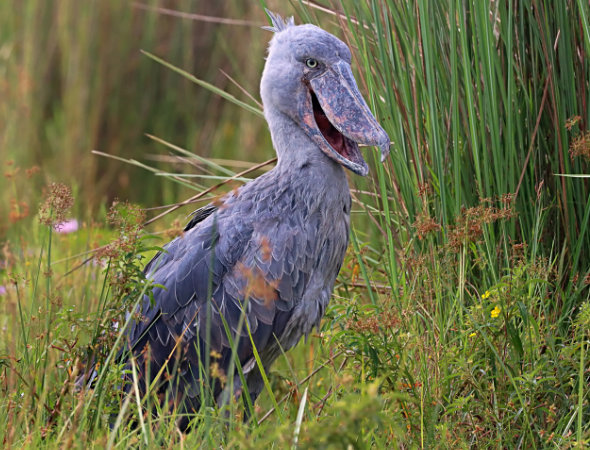
The Shoebill is another of the world’s most recognizable and fascinating monotypic species. The family name Balaenicipitidae comes from the genus name Balaeniceps, which combines “whale” (Balaena) and “head” (caput). It’s a nod to the shoebill’s distinctive and enormous head and bill. Its huge, shoe-shaped bill is unlike that of any other bird, broad and powerful with a sharp hook at the tip, perfectly adapted for catching lungfish, frogs, and other aquatic prey in its wetland habitat.
The Shoebill often stands motionless for long periods, waiting with intense focus before striking with remarkable speed. Its bright yellow eyes, set forward in the head, give it a piercing, almost prehistoric appearance.
The bird’s massive bill is also used to scoop water onto its young during hot weather, an unusual behavior among wading birds. Moving more like a heron than a stork, the Shoebill’s presence in Uganda’s papyrus swamps is one of the continent’s most unforgettable birding experiences.
Uganda is among Africa’s most diverse and rewarding destinations, combining spectacular scenery, rich wildlife, and over 1,000 bird species in an area the size of Great Britain. Our tour here spans the source of the White Nile at Lake Victoria, the savannas and dramatic falls of Murchison Falls National Park, and the towering Ruwenzori Mountains. We also spend time in the montane forests of the Virunga volcanoes, home to some of the last remaining Mountain Gorillas. Uganda’s habitats range from papyrus-lined wetlands to forested highlands and acacia plains, producing an exceptional mix of birdlife including Grauer’s Broadbill, Green-breasted Pitta, Great Blue Turaco, and countless Albertine Rift endemics. With comfortable lodges, world-class guiding, and the chance to track both gorillas and chimpanzees, this journey captures the very essence of East African adventure.
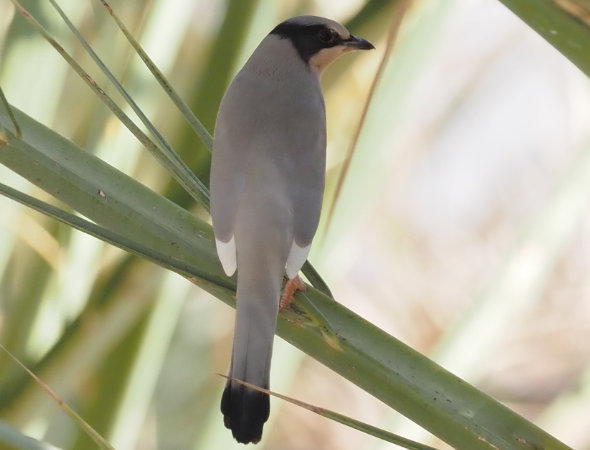
The Grey Hypocolius is the only member of the family Hypocoliidae. Slender and long-tailed, it is easily recognized by its soft gray plumage, black mask, and black wings neatly edged in white. A fruit specialist throughout the year, it feeds mainly on the berries of the toothbrush tree (Salvadora persica) and on dates, occasionally supplementing its diet with insects when fruit is scarce. This species typically breeds in loose colonies, with both sexes sharing incubation and chick-rearing duties in small cup nests. It is a quiet, shy species that often conceals itself deep in vegetation, emerging cautiously once the danger has passed.
Oman offers an ideal blend of culture, climate, and birding diversity.
This forward-looking nation has mastered life amid desert and mountain landscapes while preserving its deep cultural traditions and natural heritage. During our tours here, we enjoy warm, dry weather and explore an impressive range of habitats, from the khawrs and coastal lagoons that attract wintering waterfowl to the fertile oases and wadis that serve as vital stopovers for Palearctic and Central Asian migrants. Raptors, including eagles and vultures, gather at carcass dumps, while sandgrouse and larks fill the desert skies. Against a backdrop of dramatic mountains and shimmering dunes, the possibility of seeing the elusive Grey Hypocolius crowns what is a relaxed yet richly rewarding Arabian birding adventure.
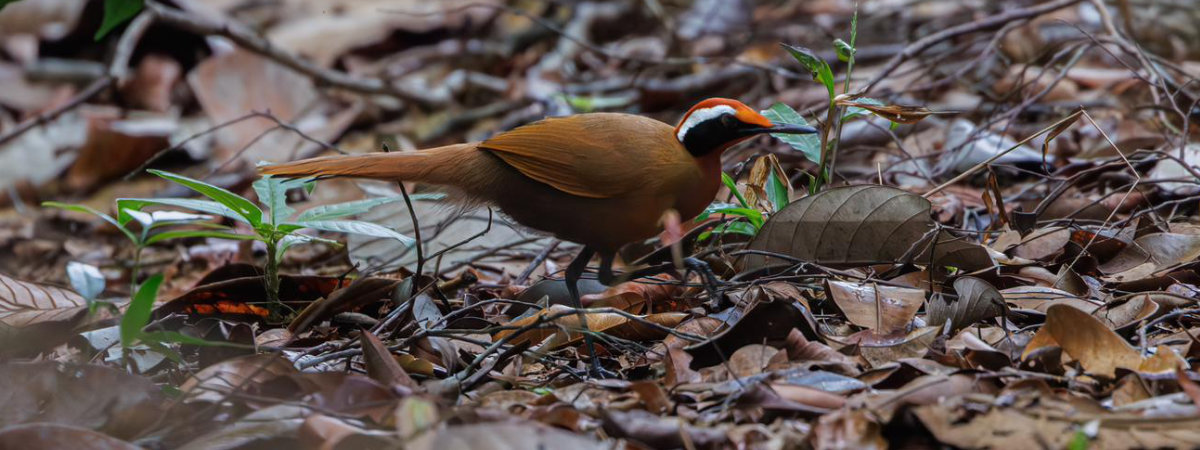
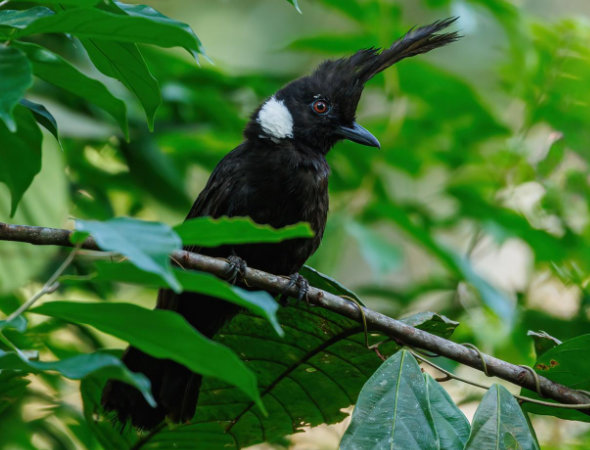
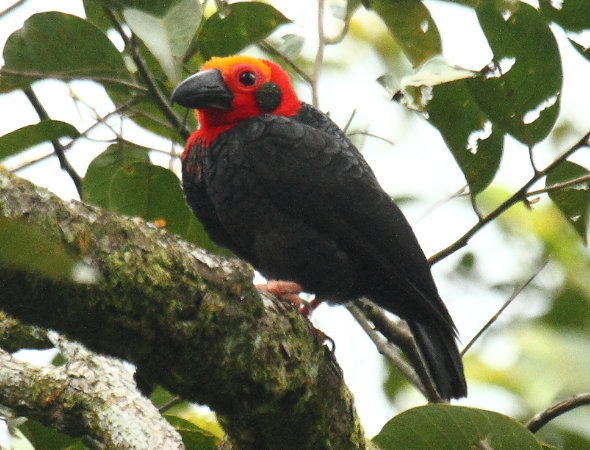
The Crested Jayshrike is one of Southeast Asia’s most enigmatic birds, its affinities long uncertain. Although its bold crest and overall shape resemble those of true jays, it is not a member of the crow family and remains taxonomically isolated. Found in the forests of Sumatra, Borneo, Java, and the Malay Peninsula, it moves quietly through the canopy in small groups, calling in a series of soft, machine-like notes that rise and fade as the birds drift away through the trees. Its long, sparse crest gives it a distinctive profile, and its social but unassuming nature sets it apart from the assertive demeanor typical of many corvids. Despite occurring in relatively accessible areas, it remains poorly studied, and much of its ecology is still a mystery.
The Bornean Bristlehead is the only member of the family Pityriaseidae and is only found on the island of Borneo. With an unusual bare yellow crown covered in short bristle-like feathers, this canopy-dwelling bird is unlike any other. Moving in small, noisy groups through the upper levels of the forest, it utters a mix of croaking and nasal calls as it forages for insects and fruit. Rarely predictable in movement or timing, the Bristlehead appears suddenly and vanishes just as quickly, leaving even experienced birders with fleeting but unforgettable encounters.
The Rail-babbler is among the most elusive and alluring species of the region’s forests, it walks quietly through the dim forest understorey, often vanishing into shadow after a brief glimpse. It is best detected by its haunting, whistled call, produced while bowing its neck and inflating blue-purple air sacs along the throat. This strange display and its ground-dwelling habits have made it a bird of myth among Asian birders. Despite its name, it is not closely related to babblers or rails but represents an ancient and isolated lineage with few known relatives.
Malaysia is a premier birding destination offering first-class infrastructure, rich ecosystems, and exceptional diversity. These tours span both Peninsular Malaysia and Borneo, visiting legendary birding sites such as Taman Negara, Fraser’s Hill, and Danum Valley, the largest remaining expanse of lowland rainforest in Southeast Asia. Participants explore rainforest trails, canopy walkways, mangroves, and jungle rivers in search of pittas, broadbills, trogons, and hornbills, along with endemic species found nowhere else. The mammal-watching is equally rewarding, with regular sightings of Orangutan, Proboscis Monkey, gibbons, civets, and Giant Flying Squirrels. With its combination of rich birdlife, tropical wilderness, and comfortable lodges, Malaysia and Borneo offer one of the finest natural history experiences in all of Asia.


The Ibisbill stands alone in the family Ibidorhynchidae. Found on wide, stony Himalayan rivers, it uses its long, curved crimson bill to probe among pebbles for aquatic larvae. Its gray plumage blends perfectly with the gravel riverbeds, providing superb camouflage and often requires some perseverance to spot. Though its name suggests otherwise, it is not related to ibises but belongs to a distinct branch of the shorebird order. Equally remarkable is the Spotted Elachura, the only member of Elachuridae. This tiny bird of the Himalayan foothills hides in the dense undergrowth, where its intricate spotted plumage and musical, high-pitched song can reveal its presence. Molecular studies have shown it to be among the oldest living songbird lineages, a true relic of early avian evolution.
Bhutan remains one of the least disturbed countries in the Himalayas, a kingdom of snow peaks, deep valleys, and endless forest. Birders travel through pristine evergreen and rhododendron woodlands, crossing dramatic mountain passes strung with prayer flags and dotted with ornate monasteries. The scenery is breathtaking, the forests rich with pheasants, laughingthrushes, and broadbills, and the cultural immersion unforgettable.

The Hylocitrea of Sulawesi, the sole member of Hylocitreidae, is a quiet, olive-green songbird that dwells in the high mountain forests of the island. Once classified as a whistler, it was later found to represent an ancient and isolated passerine lineage. Perhaps its true affinities should have been suspected earlier, for its song is a series of high-pitched buzzy notes, not the rich whistles of its namesake, and its relatively delicate bill with a terminal hook, contrasts with the stouter bills of whistlers as well. There is still much to learn about this species, not even its nest has been described yet!
It moves through the canopy in pairs or small groups, feeding on small fruits and insects, its soft calls almost lost in the misty forest. The species embodies the evolutionary distinctness of Wallacea, where Asian and Australasian faunas overlap.
Sulawesi and Halmahera, part of the fabled Wallacean region, are among Indonesia’s most biologically rich islands. Towering volcanoes, tropical lowlands, and montane forests harbor an astonishing number of endemic species, from parrots and hornbills to kingfishers and pittas. Our tours here offer a vivid blend of color, sound, and discovery amid some of the least-visited and most fascinating habitats on Earth.

The Przevalski’s Finch is the only representative of Urocynchramidae, a shy species found in the high-altitude scrub and grasslands of the Tibetan Plateau. This shy and enigmatic songbird from the alpine scrub of central China has long puzzled taxonomists and ornithologists. It has ten primaries, which distinguishes it from many of the taxa in the passeroid cluster, a bill that appears bunting-like externally, but not internally, and a long pink tail that sets it apart from the fringillids. Its song recalls a bunting or a finch, but careful analysis reveals affinities with neither. The first known nest was only found a decade ago. Males display soft pink plumage and perform fluttering flight songs over their territories. This species stands as one of Asia’s most scientifically significant birds, representing a lineage that diverged very early in passerine evolution.
Sichuan Province showcases the finest birding in China. Birders traverse bamboo forests, alpine meadows, and snow-capped passes on the edge of the Tibetan Plateau, encountering a wealth of pheasants, warblers, and endemic species. The landscapes are immense and varied, combining remote wilderness with some of the richest avian diversity in East Asia.

The Wallcreeper is one of the most visually striking and sought-after birds in Eurasia. Long-billed and uniquely adapted for life on vertical rock faces, it is the only member of Tichodromidae. Its soft gray plumage conceals it perfectly against cliffs until it opens its wings, flashing an astonishing crimson. Despite its large but patchy range from northern Spain to China, the species is rarely seen and remains a prize for birders across its distribution. In summer, it inhabits remote, rocky habitats high in the mountains, where it feeds on insects in crevices and ledges. During winter it often descends to lower elevations, sometimes even frequenting cities where it clings to the walls of cathedrals and other tall buildings as if they were cliffs.
Constantly flicking its wings as it forages, the Wallcreeper’s movements are as mesmerizing as its colors. Once thought to represent its own ancient family, it is now usually regarded as a close relative of the nuthatches within Sittidae, though its form and behavior remain entirely unique.
Our Northern India tour targets this species and many others in an extraordinary mix of habitats, from the wetlands of Delhi and the forests of Corbett to the tiger-rich grasslands of Ranthambore. The birdlife is abundant, with pheasants, owls, skimmers, and waterfowl complementing an exciting array of mammals. Scenic beauty, rich culture, and wildlife encounters combine into one of the subcontinent’s most rewarding experiences.

The Magellanic Plover, the only species in Pluvianellidae, inhabits saline lagoons and estuaries in the windswept landscapes of southern Patagonia. Plovers in name only, they have a form and behavior reminiscent of a small, long-legged dove. In contrast to the running-and-snatching strategy of true plovers, these birds are much more methodical, pecking repeatedly as they walk, often bobbing up and down as they go. And occasionally, unlike any other shorebird, they will go to great lengths to dig into the substrate with their feet to go after food. Indeed, if the food seems to justify the effort, a foraging bird will dig a hole nearly its own body size after only a few minutes of steady work. When the young are fed, they secrete a crop milk not unlike that of doves.
The odd look of this bird, the bill shape and the behavior have caused it to be classified as part of various groups through time. It was at one point thought to be a sandpiper due to the turnstone-like bill and patterns of the downy young. At other periods it was suggested to be an odd dove due to the crop milk, and soft “dove like” look. Molecular data clarifies that it is indeed a shorebird, but that it does belong in its own family and that its closest relative may be the Sheathbills (Chionidae).
This species breeds only in southernmost Patagonia, in both Chile and Argentina. Southern Patagonia is a land of extremes, from the glaciers of Los Glaciares National Park to the granite peaks of Torres del Paine. The scenery is among the most dramatic on Earth, home to Andean Condor, Magellanic Woodpecker, White-bellied Seedsnipe and many more. The vast openness of this region offers birding amid some of the most breathtaking wilderness left in the world.

The Wrenthrush is the sole member of Zeledoniidae and is found only in the highlands of Costa Rica and western Panama. plump and olive-colored with a bright orange crown, it creeps through mossy forest undergrowth and sings a wiry, insect-like song. Despite its name, it is unrelated to wrens or thrushes. Genetic studies show it represents a deep, isolated branch of the songbirds, with no close relatives alive today. It forages mostly on the ground, albeit in dense cover, somewhat in the manner of a thrush or an antpitta, often within bamboo. It is endemic to a relatively small area, from northern Costa Rica to west-central Panama, where the species chiefly occupies areas above 1,500 m, and it locally reaches as high as the treeline.
Costa Rica’s volcanic highlands and cloud forests are among the richest birding areas in the world. With more than 850 species recorded, the country offers exceptional bird diversity in a compact and accessible setting. From fiery hummingbirds to dazzling trogons and manakins, every day brings encounters with new species. Excellent lodges, pristine reserves, and the country’s commitment to conservation make it an ideal destination for birders of all experience levels.
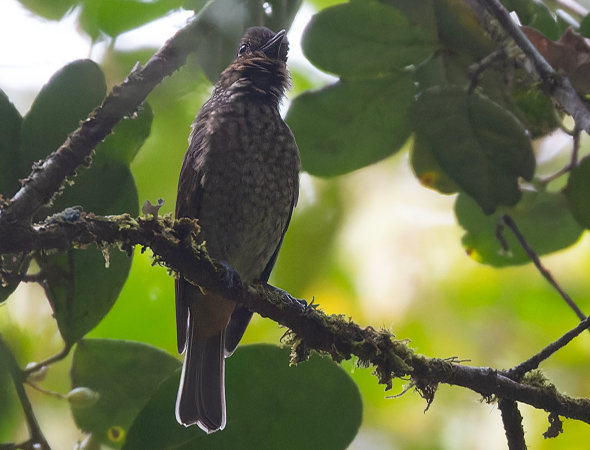
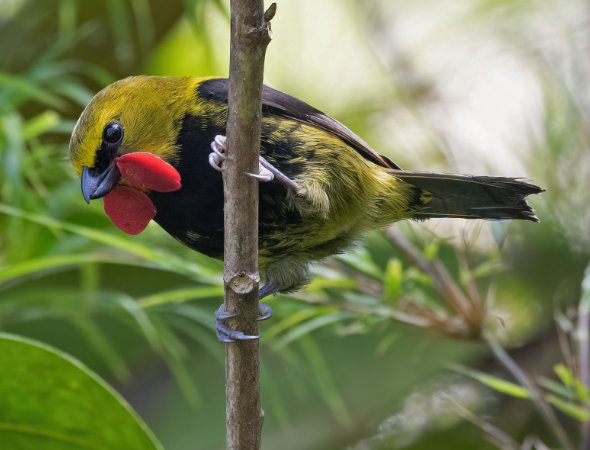

The Blue-capped Ifrit is one of the world’s most unusual birds. It is the sole member of the family Ifritidae and an evolutionary relic found only in the island’s high mountain forests. Largely arboreal, it moves methodically along moss-covered trunks and branches, gleaning insects in the manner of a nuthatch. This species is among the few known toxic birds in the world, accumulating batrachotoxins in its skin and feathers from beetles in its diet. This chemical defense deters predators, a fact long recognized by New Guinea’s mountain peoples, who describe the bird as bitter and inedible.
The genus was named by Walter Rothschild in 1898 , possibly coming from “Ifrit,” a spirit in Islamic mythology. The specific reason for choosing this name is not explicitly stated in the search results, but the meaning likely alludes to the bird’s enigmatic nature and the difficulty in classifying its evolutionary affinities, which remained obscure for many years.
Papua New Guinea is one of the world’s last great frontiers for birding and natural exploration. The island’s vast mountains, rainforests, and river systems hold an extraordinary concentration of endemic wildlife.
Our tours above are designed to showcase this diversity, focusing on the region’s most celebrated bird families, including the monotypic Blue-capped Ifrit, Wattled Ploughbill, and Mottled Berryhunter, as well as Satinbirds, Berrypeckers, Longbills, Painted Berrypeckers, and Melampittas. The tours cover both the lowlands and highlands, from the lush forests of Varirata and Kiunga to the montane habitats of Rondon Ridge and Mount Hagen. Birders can expect unforgettable encounters with Birds-of-paradise, bowerbirds, kingfishers, honeyeaters, and fruit doves, alongside a wealth of lesser-known endemics. Papua New Guinea remains one of the most exciting and exotic birding destinations on Earth, offering a rare glimpse into an ancient and still largely untamed world.
